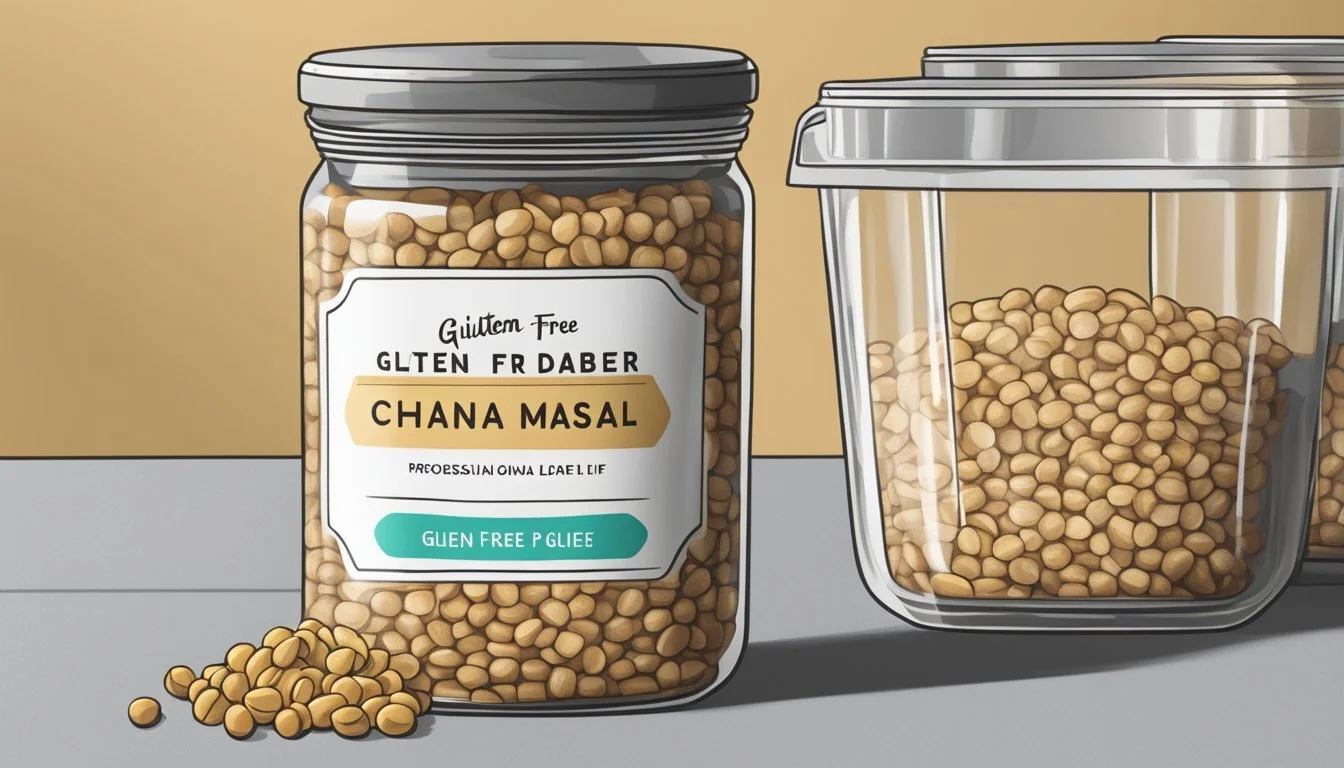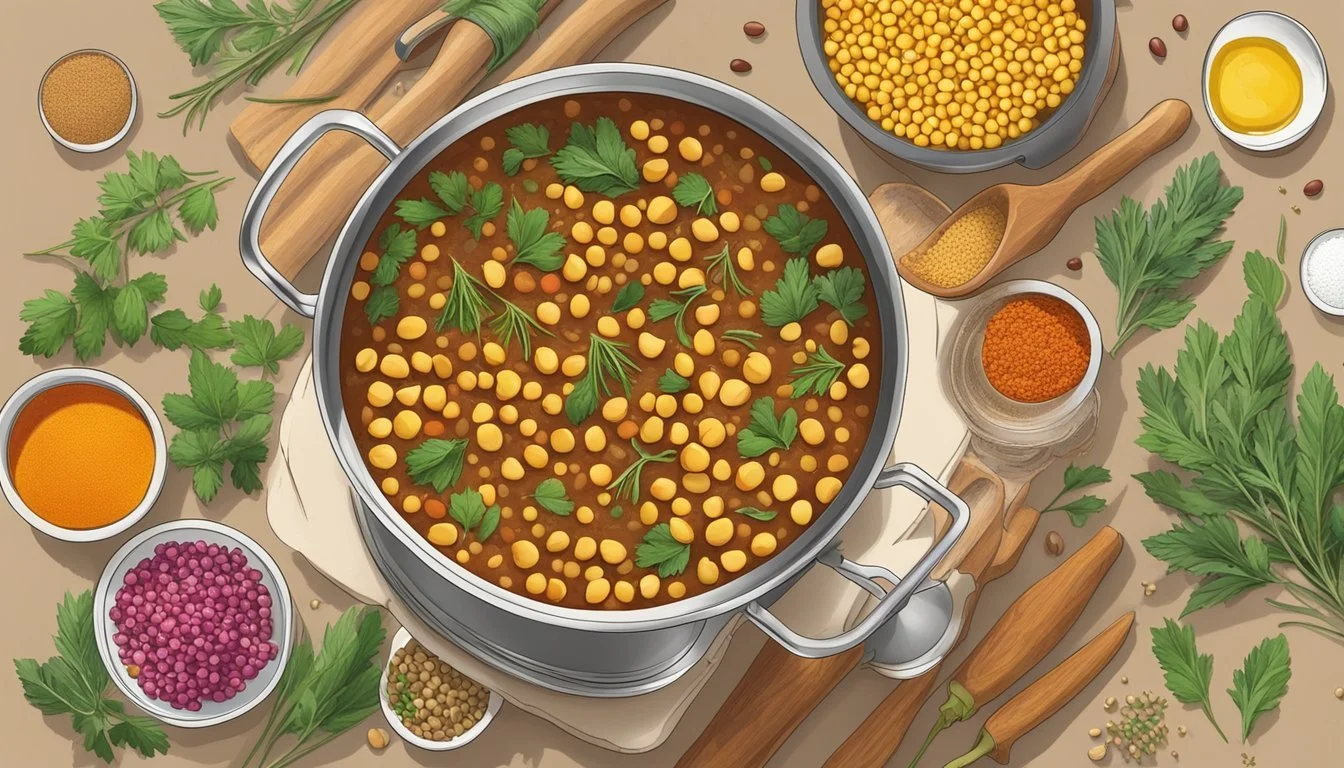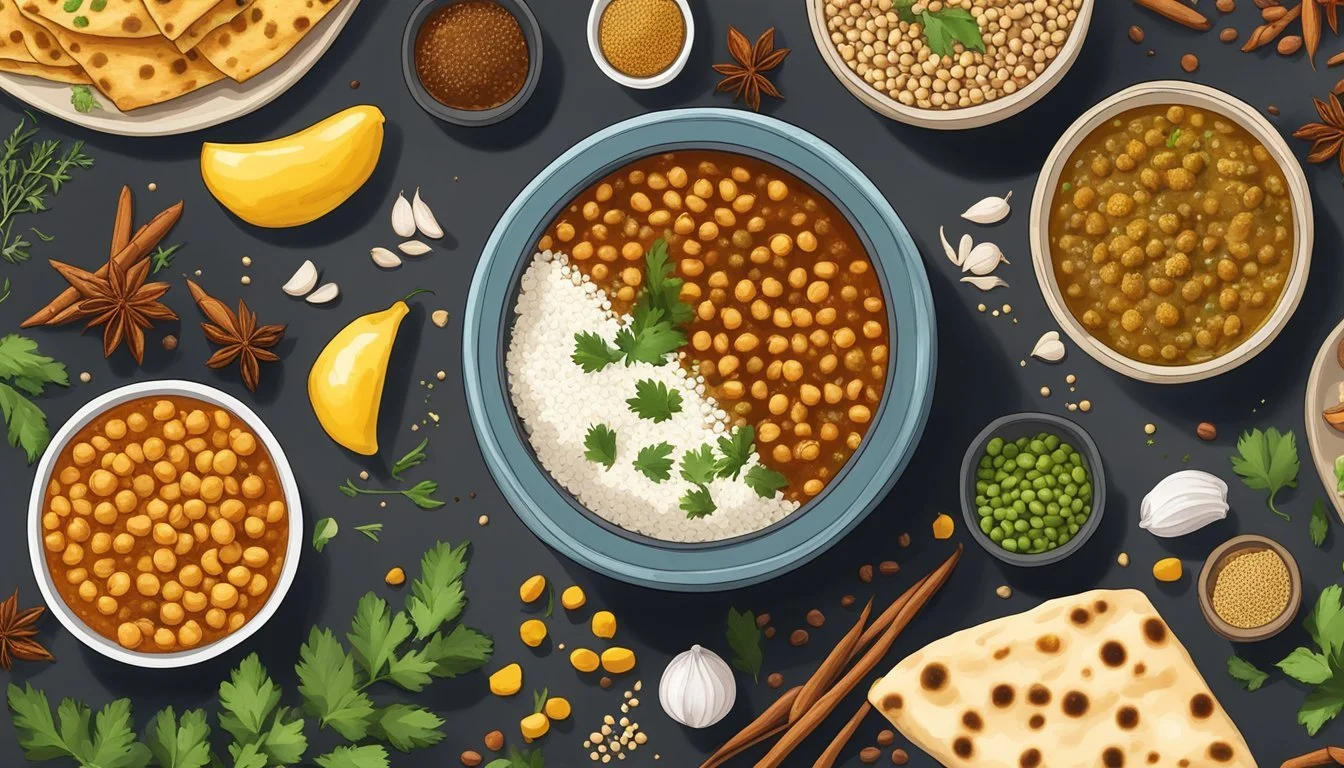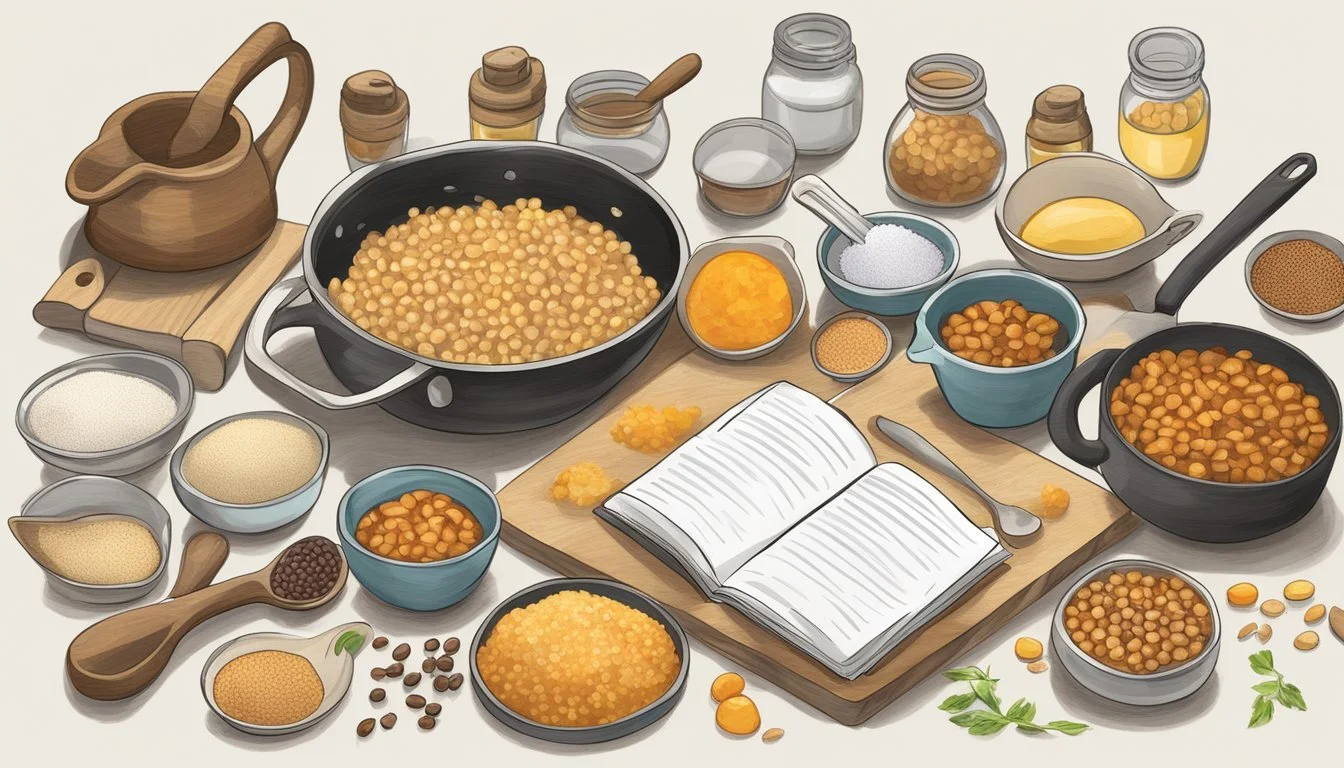How Long Does Gluten-Free Chana Masala Last?
Storage Tips and Shelf Life
Chana Masala, a staple in many Indian households, offers a delicious and hearty meal option that's naturally gluten-free. This fragrant and spice-infused dish brings chickpeas to life in a tomato-based sauce, making it both a nutritional and culinary delight. This gluten-free version combines the traditional flavors with dietary inclusivity, making it accessible for those with gluten sensitivities.
For those curious about how long gluten-free Chana Masala lasts, this dish stays fresh in the fridge for 2 to 3 days. For extended storage, it can be frozen for up to two months without compromising its rich and robust flavor. This makes it an excellent option for meal prep, ensuring you have a tasty, healthy meal ready whenever you need it.
When stored correctly, gluten-free Chana Masala can be a versatile addition to your weekly meal rotation. Whether served over basmati rice or paired with roasted vegetables, its flavors only deepen over time, enhancing the dining experience. Dive into this dish knowing that every bite is a blend of health and taste.
The Fundamentals of Gluten-Free Chana Masala
Gluten-Free Chana Masala is a classic Indian dish known for its rich flavors and healthy ingredients.
At its core, Chana Masala features chickpeas as the primary ingredient. These legumes are not only packed with protein but also naturally gluten-free, making them ideal for gluten-intolerant individuals.
The base of Chana Masala is usually a tomato-based sauce. Fresh tomatoes bring acidity and sweetness, balancing the dish.
Onions, garlic, and ginger are foundational elements. They are sauteed together to create a fragrant and flavorful base.
Indian spices like garam masala, turmeric, and chili powder are crucial. They layer the dish with warmth and complexity.
Here are some common spices used in Chana Masala:
Garam Masala: A blend that includes cumin, coriander, cardamom, cloves, and black pepper.
Turmeric: Adds a deep yellow color and earthy flavor.
Cumin and Coriander: Often used both in seed and powdered forms.
Chili Powder: Provides heat.
Vegan and gluten-free, this dish is inclusive for those with dietary restrictions.
Chana Masala can be served with:
Rice: Typically basmati.
Gluten-Free Naan or Roti: For those adhering to strict gluten-free diets.
When made, Gluten-Free Chana Masala holds well, making it perfect for meal prep. It can be stored in the refrigerator and reheated without losing its flavor.
By understanding these fundamentals, one can appreciate the balance and tradition behind Chana Masala.
Nutritional Profile
Chana masala is a nutritious dish that offers a variety of health benefits.
Protein: Chickpeas, the main ingredient, are a great source of plant-based protein. One cup of cooked chickpeas contains about 15 grams of protein, making this dish an excellent option for those looking to increase their protein intake.
Fiber: Chickpeas are also rich in dietary fiber. A single cup provides approximately 12 grams of fiber, which supports digestive health and helps maintain steady blood sugar levels.
Iron: Iron is another key nutrient found in chickpeas. One cup of cooked chickpeas delivers about 4.7 milligrams of iron, which is essential for transporting oxygen in the blood and supporting energy levels.
Vitamin C: While chickpeas are not a significant source of Vitamin C, the addition of lime or lemon juice in many chana masala recipes adds a worthwhile boost, contributing to immune health and skin health.
Potassium: Chana masala includes ingredients like tomatoes that are high in potassium. Potassium is crucial for maintaining heart health and regulating fluid balance in the body.
Healthy Fats: If prepared with unsalted butter or coconut milk, chana masala provides healthy fats that contribute to satiety and overall nutrient absorption.
Gluten-Free: Chana masala is naturally gluten-free, making it a safe and healthy choice for individuals with celiac disease or gluten sensitivities.
Nutritional Breakdown (per cup of cooked chana masala):
Nutrient Quantity Protein 15 grams Fiber 12 grams Iron 4.7 milligrams Vitamin C Varies (with lime/lemon) Potassium 478 milligrams
Preparing Your Gluten-Free Chana Masala
Creating a delightful gluten-free chana masala involves selecting the right ingredients and following precise cooking instructions. This ensures a flavorful and satisfying dish suitable for various dietary needs.
Ingredients Selection
To prepare gluten-free chana masala, choose fresh and high-quality ingredients. Essential items include chickpeas, tomatoes, and onions. Ensure the spices, such as cumin, coriander, turmeric, garam masala, and paprika, are gluten-free. Fresh ginger and garlic elevate the flavor.
Opt for canned chickpeas if saving time, but dried chickpeas, soaked and cooked, offer a richer texture. For a vegan version, use coconut milk instead of cream. Organic or fresh cilantro adds a fresh finishing touch.
Cooking Instructions
Start by heating oil in a pot and sautéing chopped onions until golden. Add minced garlic and ginger, cooking until aromatic. Stir in diced tomatoes and your spice blend, including cumin, coriander, turmeric, garam masala, and paprika.
Once the tomatoes soften, mix in chickpeas. Add water or broth for desired consistency and simmer for 20 minutes. Stir occasionally. Near the end, add fresh spinach if desired, stirring in fresh cilantro and lemon juice. Adjust salt to taste before serving. Enjoy with rice or naan.
Optimal Storage Practices
To ensure gluten-free chana masala remains fresh and safe, proper storage practices are crucial. This involves short-term refrigeration for immediate consumption and long-term freezing for future use.
Short-Term Refrigeration
For short-term storage, place leftover chana masala in an airtight container. Refrigerate within two hours of cooking to minimize bacteria growth. Stored correctly in the refrigerator at a consistent temperature of 40°F (4°C) or below, gluten-free chana masala can last up to 4-5 days.
Maintain the quality by keeping it sealed to avoid exposure to air and odors from other foods. Glass containers are preferable due to their non-reactive nature, preserving the dish’s flavors. Ensure the refrigerator is not overfilled, allowing the cold air to circulate properly.
Long-Term Freezing
For long-term storage, freezing is the best method. Ensure the chana masala is completely cooled before transferring it to freezer-safe containers or heavy-duty freezer bags. Leave a little space at the top for expansion. Label the containers with the date of freezing.
When freezing, the chana masala can last safely for up to 3 months. Thaw it in the refrigerator overnight before reheating. Reheat thoroughly, ensuring it reaches an internal temperature of 165°F (74°C) to eliminate any potential bacterial growth.
By following these storage practices, the gluten-free chana masala retains its quality and safety, providing peace of mind and delicious meals whether stored in the refrigerator or freezer.
Pairing and Serving Suggestions
Chana masala pairs excellently with basmati rice or brown rice. These options complement the flavors and provide a satisfying texture contrast.
For those who prefer bread, naan made from gluten-free ingredients is an excellent alternative. This Indian dish also works well with bhatura bread or papadum for added variety.
Cilantro and lemon juice enhance the dish when sprinkled on top. These fresh additions bring out the rich, spiced flavors of the chana masala.
Serving this vegan and plant-based meal for lunch or dinner is ideal. It can be enjoyed with side dishes like aloo gobi, cucumber salad, or roasted vegetables. These sides add nutritional value and diversity to the meal.
Raita made with dairy-free yogurt can be paired to cool the palate. Adding a side of mango chutney provides a sweet contrast to the savory flavors.
If meal-prepping, chana masala can be stored in the fridge and reheated. It often tastes better after the flavors meld overnight.
Samosas and other Indian appetizers can accompany chana masala for an all-rounded experience. This adds layers of taste and texture, making the dining experience memorable for everyone.
Ensuring a balanced and flavorful meal involves mixing different textures and tastes.
Customizing Your Chana Masala
Personalizing your Chana Masala allows you to adjust the spice levels and experiment with different ingredients to fit your preferences or dietary needs. Whether you're aiming for a milder taste or incorporating unique flavors, there are plenty of ways to customize this dish.
Adjusting Spice Levels
Spice levels in Chana Masala can be tailored by varying the amount and types of chili used. Green chili and Serrano pepper provide a fresh, moderate heat, while cayenne pepper and red chili powder offer more intense heat.
For those who prefer a milder version, reduce the amount of chili or substitute with sweet bell peppers. Conversely, to increase spiciness, include additional chilis or a pinch of powdered chili. Adjusting these elements allows control over the heat intensity without compromising the overall flavor.
Alternative Ingredients
Incorporating alternative ingredients can innovate the dish while keeping it gluten-free and delicious. Replacing regular oil with coconut milk provides a creamy texture and a subtle sweetness. For an oil-free version, sauté ingredients in vegetable broth instead.
Adding a bit of amchur powder (dried mango powder) can introduce tanginess, while a dash of sugar balances the spice. Various vegetables like spinach, kale, or carrots can enhance the nutritional value. Each of these modifications allows for a unique twist on traditional Chana Masala, catering to varied dietary preferences and tastes.
Special Dietary Considerations
Gluten-free Chana Masala is a versatile dish that caters to various dietary needs. It's naturally vegan and plant-based, making it a suitable choice for those avoiding animal products.
Allergy-Free: This dish is typically free from common allergens like nuts and dairy. However, always check specific recipes and ingredient labels to ensure they meet individual allergy requirements.
Dairy-Free: Since Chana Masala does not contain any dairy, it is a great option for those who are lactose intolerant or following a dairy-free diet.
Protein-Packed: Chickpeas are the primary ingredient, providing a substantial amount of protein. They make the dish filling and nutritious, ideal for those looking to increase their protein intake without consuming meat.
Veggie-Packed: Often made with tomatoes, onions, and various spices, this dish is rich in vegetables and nutrients. It can be paired with a side of vegetables or a salad to enhance its veggie content even more.
Approachable Indian Dishes: Chana Masala is a beginner-friendly recipe within Indian cuisine. Its ingredients are commonly found in most kitchens, and it offers a mild, flavorful experience that can be adjusted to suit different spice preferences.
Tool and Equipment Guidance
When preparing gluten-free Chana Masala, selecting the right tools and equipment ensures an efficient and successful cooking process. The choice of cookware may vary, but key options include a pot, pressure cooker, skillet, or an Instant Pot.
Cooking With a Pot
A heavy-bottomed pot with a lid is essential for cooking Chana Masala on the stovetop. This method allows for slow simmering, which helps develop the flavors over time. Use a wooden spoon to stir the ingredients. The pot should be large enough to accommodate all ingredients without overcrowding.
A pot offers full control over cooking time and heat levels. Be mindful of consistency, stirring occasionally to prevent sticking. Heat the pot gradually and maintain a medium flame to avoid burning the spices.
Using a Pressure Cooker
A pressure cooker speeds up the cooking process significantly. Choose one with a capacity of at least 6 quarts. It should be equipped with a pressure release valve, and it’s beneficial to have a rack or trivet for pot-in-pot cooking.
Rinse and soak the chickpeas beforehand to enhance tenderness. Pre-sauté spices with onions and garlic using the sauté function, if available, before adding the liquids and chickpeas. Follow manufacturer settings for cooking pulses, typically around 15-20 minutes.
Cooking With a Skillet
A deep, non-stick skillet is effective for making Chana Masala, especially when aiming for a quick stovetop preparation. Choose a skillet with a lid to trap steam and evenly cook the ingredients. It should be wide enough to disperse heat uniformly.
Heat the skillet before adding oil to ensure an even cook of spices. Constant stirring is necessary to avoid burning. Lower the heat once the tomatoes are added to allow the sauce to thicken without losing moisture.
Using an Instant Pot
Using an Instant Pot blends the convenience of a pressure cooker with versatile cooking settings. The sauté mode allows for browning the aromatics and spices well before pressure cooking. Ensure it’s correctly sealed to maintain pressure throughout the cooking process.
Opt for a model with at least 6 quarts capacity for batch cooking. Use the sauté function to brown onions and garlic first. After pressure cooking for about 15 minutes, perform a quick release and check consistency. Adjust seasoning before serving.
Each method offers unique advantages, but proper cookware and familiarity with your chosen equipment ensure the best results for a delicious gluten-free Chana Masala.









